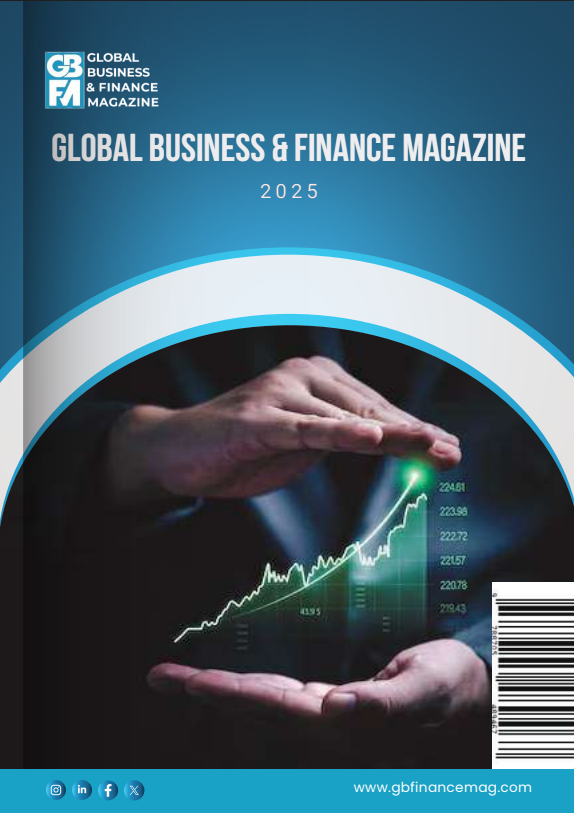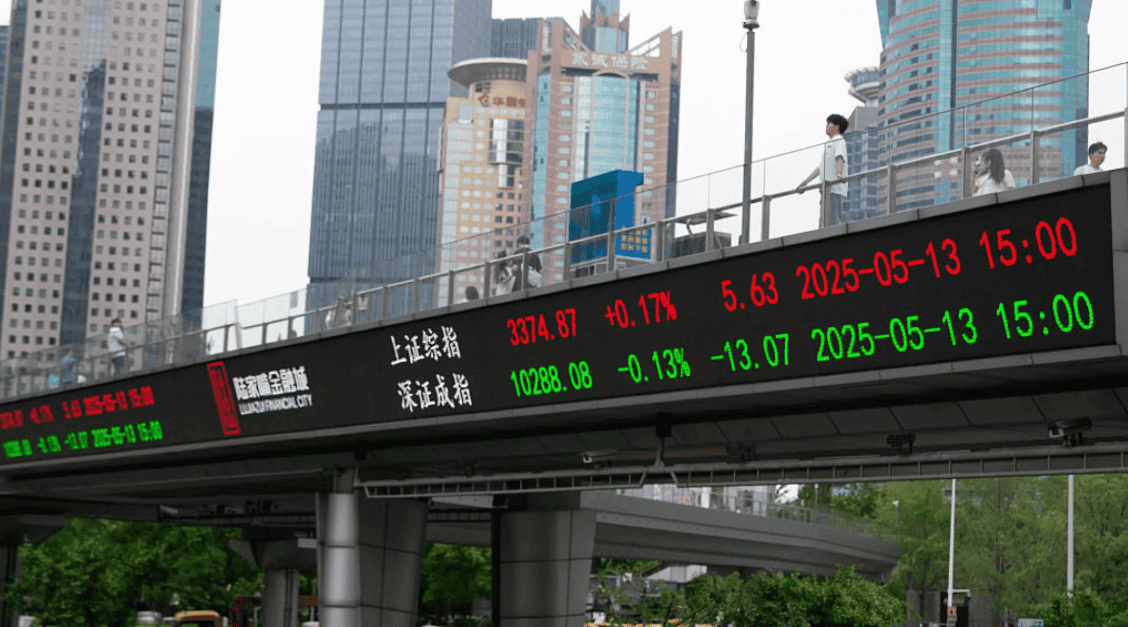Depending on how it is measured, China’s economy is now the world’s largest or second largest. It is also the world’s second-most intertwined in terms of trade relationships, after the European Union, and is a major investor and lender in the emerging world. Understanding where China is heading is important for the whole world. This requires an assessment of both China’s strengths – and also the challenges it faces, of which ten can be highlighted.
According to Chinese policymakers, the economic outlook is positive, despite the trade war ignited by President Donald Trump, and China’s growth target has been kept at 5 percent. However, to reach that level in 2024, China needed a massive $1 trillion trade surplus. Chinese trade is now threatened by a more protectionist external environment.
Laxer fiscal policies have seen the official deficit eased from 3 percent to 4 percent of GDP, the largest on record, and a less strict monetary policy. However, no stimulus has been announced – a rather conservative response to the external environment. Meanwhile, China’s inflation target has been cut from 3 percent to 2 percent, but the reality is that China is already suffering from entrenched deflation, which the government does not seem ready to fight.
This may be because of the need to remain competitive in export markets, even at the cost of a deflationary environment. Export prices fell in 2024 and have continued to fall in 2025. Even consumer prices in China have fallen since February 2025. While pushing prices down to compete is not without risk (Japan’s experience in the 1990s is a good example; García-Herrero and Xu, 2025), President Trump’s tariffs and the ongoing weakness of the dollar do not leave China much space.
China has also confirmed it will continue to step up manufacturing as a growth engine – there is no intention of correcting overcapacity by reducing supply. Because the increase in the fiscal deficit seems directed at supporting the debt restructuring of local governments rather than boosting domestic consumption, and because China’s labour market remains weak and disposable income stagnant, Chinese consumption cannot be expected to jump substantially in 2025. China will thus need to continue to force exports to reduce overcapacity.
For Europe these trends are worrying because Chinese products may further flood the European market and because European companies in China will face even more competition from Chinese players, given the strong deflationary pressure.
China also intends to step up self-reliance in critical technologies, including artificial intelligence (AI), quantum computing and semiconductors – areas in which China still lags the US (García-Herrero et al, 2025). Large-scale US investment programmes such as the Stargate AI project have pushed Beijing to channel more resources to AI and quantum, with China looking much more credible after the launch of the DeepSeek AI platform in January 2025 (Martens, 2025).
Will it work? China’s 10 economic challenges
Whether China’s strategy will re-ignite its economy or mitigate its structural deceleration, will depend on the extent to which the responses tackle China’s ten biggest challenges.
Challenge 1: Hardly any fiscal room
For years, China has been the envy of many other economies because of its fiscal space, which allowed it to conduct a massive stimulus during the global financial crisis in 2008 when demand for its exports plummeted. But that huge stimulus provoked a ballooning public debt, which now equals 100 percent of GDP (Figure 1). This is a lower level than the US, but still massive compared to countries with incomes per capita similar to China.
China’s growing public debt stems from huge fiscal deficits, especially when the total local government borrowing is taken into account, including that generated through special vehicles widely used to finance real estate and infrastructure projects (Figure 2).
Challenge 2: Monetary policy constraints
China long had monetary policy headroom, especially after developed economies in particular introduced ultra-lax monetary policies in response to the COVID-19 pandemic in 2020, bringing their interest rates close to or even below zero. China instead maintained interest rates above 3 percent for most of that period but has had to cut them more recently as a response to a stagnant economy.
There is still space for the People’s Bank of China (PBoC) to cut rates, or even introduce quantitative easing, but the reality is that monetary policy remains restrictive both in terms of the high level of real interest rates, because of deflation, and slowing monetary aggregates (Figure 3). Two major constraints explain this ‘reluctant’ tightening. First, the rather weak renminbi leaves less room for the PBoC to ease monetary policy. Second, Chinese banks, already suffering from very poor profitability, would find it difficult to bear an even lower net interest margin stemming from further rate cuts.
Challenge 3: Domestic demand
China continues to produce well beyond what it can sell domestically (Figure 5). While manufacturing has always been China’s growth engine, this trend has intensified massively since 2021, in the context of the collapse of the real-estate sector (see challenge 7). Fixed-asset investment in manufacturing is increasing much faster than GDP, while real-estate investment has plummeted (Figure 6). In some industries, notably green tech, capital investment by Chinese companies is so massive that it amounts to nearly 90 percent of the global total – as seen with solar panels (Figure 7).
Challenge 4: External demand and geopolitical challenges
The good news for China is that the world has accommodated even more Chinese exports since the COVID-19 pandemic. Chinese imports have been stagnant, so this has meant a very large trade surplus, which has been crucial for growth (Figure 8). However, the surge in manufactured goods exports, pushing China’s share to 18 percent of global manufacturing exports, might be hard to sustain in the context of greater protectionism everywhere (Figure 9).
The US has already reduced its imports from China, while the EU and the emerging world have seen increases (notwithstanding EU tariffs on Chinese electric vehicles). It seems hard to believe that China’s massive industrial capacity can continue to rely on foreign markets as much as in the past.
Challenge 5: overcapacity and deflationary pressures
Despite the rest of the world importing from it, China’s industrial capacity is simply too much to absorb. China’s capacity utilisation rate has dropped from a peak in 2021 and is close to the levels seen during the pandemic (though still higher than during China’s worst episode of overcapacity in 2015; Figure 10). Still, capacity utilisation might not be the best measure of China’s overcapacity, since it is comparable to that of the US. Nevertheless, plummeting producer prices are a signal of the problem, putting downward pressure on companies’ margins (Figure 11). Proliferating protectionism can only worsen deflationary pressures in China unless China can foster domestic consumption.
Challenge 6: stubbornly low private consumption without policy support
There is general agreement that increasing private consumption would help resolve China’s imbalances, but it is easier said than done. The ratio of Chinese private consumption to GDP remains stubbornly low, especially compared to fixed-asset investment. While investment is too high, domestic savings are even higher. China continues to have the world’s highest savings ratio (Figure 12), as a response to the lack of a welfare state, but also very few private saving opportunities.
Changing this would require major reform, such as strengthening the pension system and offering unemployment benefits and public healthcare. None of these reforms seem to be on the government agenda. President Xi Jinping has expressed his reservations about a welfare-state-based model, which he dubs “welfarism”.
Challenge 7: real estate still contributing to asset price deflation
China’s real-estate sector, long the main source of growth (one third of the total and also one third of fixed-asset investment), burst in 2021 when China’s largest developer, Evergrande, defaulted. Since then, the contribution of real estate to growth has been negative (it was already very low; Figure 14). House prices and real-estate transactions have been falling for years (Figure 15).
Challenge 8: Over-investment at the cost of increasingly low returns
China’s high savings have fed the huge investment boom. This boom certainly helped China grow very rapidly but it has remained the main source of growth for too long, ultimately becoming excessive, as shown clearly in increasingly low returns. Returns on assets are lower for state-owned enterprises (SOEs), as one would expect, but also for privately-owned enterprises (POEs) (Figure 16).
Challenge 9: shrinking population
China is an outlier in terms of the speed at which the population has aged. The introduction of the One Child Policy in 1980 explains China’s difficult demographics, but the fertility rate has also fallen rapidly since 2019 (Figure 17), possibly because of the much more uncertain environment, leading to a negative sentiment about future economic prospects.
Even if China’s population has already peaked and the labour force is declining, the actual contribution of the labour force to GDP growth should remain positive as long as China continues to urbanise. The urbanisation process is estimated to be completed by 2035 (García-Herrero, 2023), which is when the decline in the labour force will also start to be felt in the cities, negatively impacting productivity and shaving off about 1.3 percentage points of growth each year (Figure 18).
Challenge 10: US technological containment
China competes with the US on innovation. The US outstrips China on spending on research and development as a percentage of GDP (Figure 19), which means that it will not be easy for China to bypass the US’s global technological dominance. Furthermore, the US has sought to contain China’s technological advance through different means, including export controls on advanced technology (Figure 20).
The questions remain of whether the US will succeed in containing China, and whether China’s push for innovation will help increase its total factor productivity or, in other words, help mitigate structural deceleration.
Conclusions
The challenges faced by Chinese economy have become harder to tackle since the return of President Trump. The Chinese government has announced measures to help stabilise economic growth at 5 percent in 2025, but the measures appear insufficient to meet the challenges.
In an increasingly difficult external environment, Chinese economic policymakers should accept that structural deceleration is unavoidable, rather than further pushing industrial capacity without introducing measures to increase consumption: structural imbalances need structural reforms. In particular, the creation of a well-functioning welfare state would reduce excessively high household savings, which are precautionary in nature. But such reforms do not seem to be in the Chinese leadership’s plans.
Source : Bruegel





